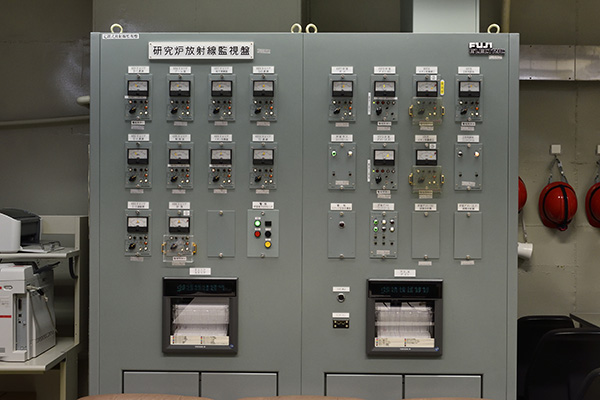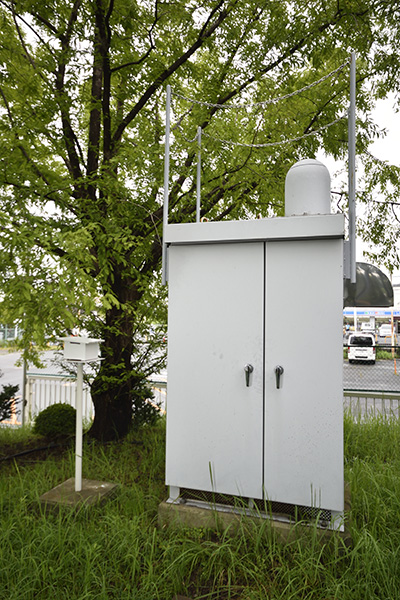Radiation Monitoring System
Indoor Radiation Monitors
- 1)Gamma Radiation Monitors
- Fixed-position gamma monitors are installed in many areas to warn of increased radiation levels.
- 2) Neutron Monitors
- The monitors are set in the reactor rooms of the KUR and KUCA to measure external dose rates by neutrons.
- 3) Dust Monitors
- To monitor the concentration of anthropogenic radioactivity in the exhaust gas from both the reactor buildings and radiation facilities, dusts are collected on a filter paper and measured continuously for alpha, beta and gamma emitters.
- 4) Water Monitors
- Water monitors are installed to observe the radioactivity level in primary/secondary coolant waters of the reactor.
- 5) Hand-Foot-Cloth Monitors
- The monitors set at the exit of corridor will detect small quantities of beta/gamma contamination on shoes, clothing, etc. Nobody goes out of the controlled area without checking contamination by this instrument.

Radiation monitoring panel for KUR
Outdoor Radiation Monitors
- 1) Monitoring posts
- Monitoring posts with a NaI probe are installed at five locations near the border of KURRI to observe and record external gamma-ray dose rates continuously.
- 2) Monitoring Stations
- At four sites in the vicinity of KURRI, i.e. Wada, Shimogawaraya, Ichiba, and Hineno, gamma-ray monitors equipped with data recorders and data transmission systems are set. Monitoring data are transmitted to the meteorological observatory in the KURRI site by a telemeter system.
Most of signals obtained by the monitoring system mentioned above are transmitted to the radiation control room and radiation levels are watched to cope with any incidents. - 3) Meteorological Observatory
- Data observed on various meteorological factors such as wind direction, wind speed, and solar radiation are accumulated and utilized to estimate the radiation dose due to airborne radioactivities either chronically or accidentally released from nuclear and radiation facilities.

Monitoring post
Others
- 1) Low Background Ge(Li) Instrument
- Radionuclide concentrations in various field samples such as soils, vegetables, surface water, sea water, river and lake sediments are determined by using a gamma-ray emitter analysis system equipped with a Ge(Li)-detector.
- 2) Survey Maters
- Appropriate survey meters capable of detecting and measuring alpha, beta, gamma-ray and neutron radiation are available at KURRI.
- 3) Glass Badge
- A glass badge is mounted on a body and changed monthly to monitor the external radiation dose.




